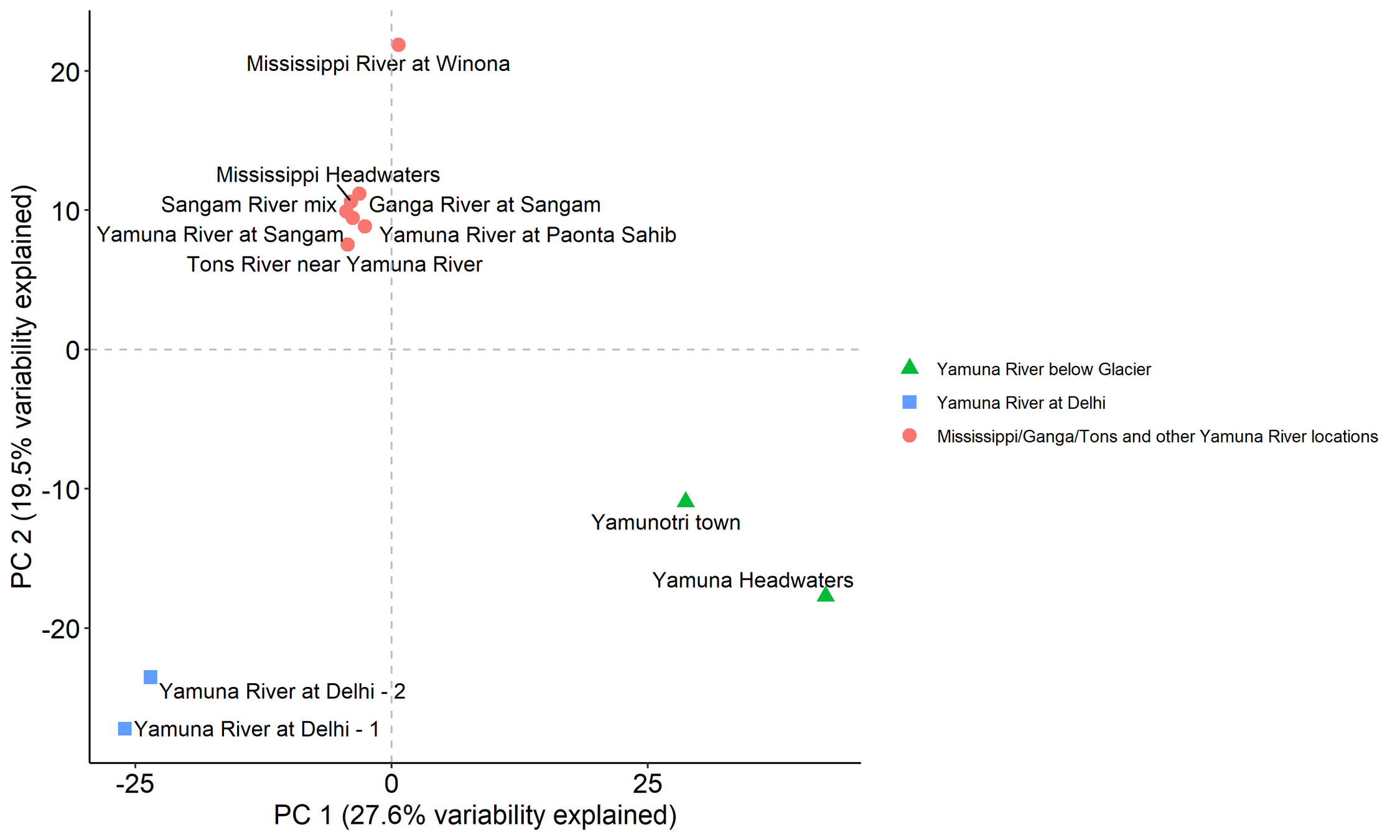Comparison of Yamuna (India) and Mississippi River (United States of America) bacterial communities reveals greater diversity below the Yamunotri Glacier
/Osvaldo Martinez, Silas R. Bergen, Jacob B. Gareis
Abstract
The Yamuna River in India and the Mississippi River in the United States hold significant commercial, cultural, and ecological importance. This preliminary survey compares the bacterial communities sampled in surface waters at 11 sites (Yamuna headwaters, Mississippi headwaters, Yamuna River Yamunotri Town, Mississippi River at Winona, Tons River, Yamuna River at Paonta Sahib, Yamuna River Delhi-1, Yamuna River Delhi-2, Yamuna River before Sangam, Sangam, Ganga River before Sangam). Bacterial 16S rDNA analyses demonstrate dominance of Proteobacteria and Bacteroidetes phyla. Actinobacteria were also dominant at sites near Sangam in India and sites in Minnesota. A dominance of Epsilonbacteraeota were found in Delhi, India. Principal component analysis (PCA) using unique operational taxonomic units (OTUs) resulted in the identification of 3 groups that included the Yamuna River locations in Delhi (Delhi locations), Yamuna headwaters and Yamuna River at Yamunotri (Yamuna River locations below the Glacier) and Mississippi, Ganga, Tons, and other Yamuna River locations. Diversity indices were significantly higher at the Yamuna River locations below the Glacier (Simpson D = 0.986 and Shannon H = 5.06) as compared (p value <0.001) to the Delhi locations (D = 0.951 and H = 4.23) and as compared (p value < 0.001) to Mississippi, Ganga, Tons, and other Yamuna River locations (D = 0.943 and H = 3.96). To our knowledge, this is the first survey to compare Mississippi and Yamuna River bacterial communities. We demonstrate higher diversity in the bacterial communities below the Yamunotri glacier in India.



